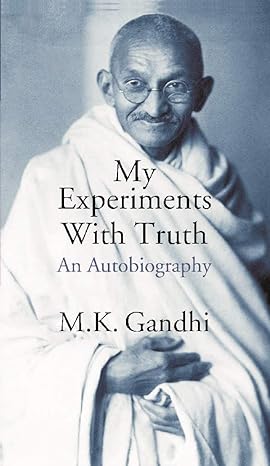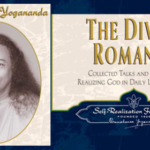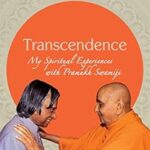Gandhi Autobiography
First of all a lot of people have ‘heard’ about the book or some of the perverse experiments and judged the man on it. One friend even claimed that he started reading the first few pages and threw it away. If you are the kind that is attracted to the perversions and judgements, may I direct you to the story of Guru & Disciple Cross the River ;oP
I always like to find out for myself and keep an open mind instead of being a parrot or person to cast the first stone. Plus my life has been a chain of experiments too. I had also heard that he used to keep a day of silence every week but not found in this book. The table of contents are already a great summary.
Update: I just found out there is another book that someone else wrote which seems to focus only on the perversions. In that case may I direct you to the story of the Elephant and The Blind Men
Notes:
– Gets into how his mother would fast according to the moon and sun.
– Married 4 times.
– Issues with handwriting and learning Sanskrit. Talks about the importance of learning Sanskrit, Persian and/or Arabic.
– Conspiracies to make locals start eating meat as it makes people stronger… just look at the westerners! Phases of eating meat and stealing stumps of cigarettes from his uncle or stealing from the servants to buy some fags. Attempts to commit suicide looking for datura seeds to do so.
– The reader is obviously not familiar with pronouncing the words. For entertainment purposes I may make a list here. Haveli -> Ha-vuh-lee, Ravi > Rayvah, Sheth > Shaeyt, Musalmân > Musclemun, Darbar > Durbur, Dayanand > Dyernaan, Bhai > bye, Kalyandas > Kulyawndus, Janmasthmi > Jaanmushtaami, Vande Mataram > One day maduhraaaaam … and many more.
– Using the knowledge in Manusmriti to return good for evil. Manusmriti – important and most studied ancient legal text among the many Dharmaśāstras of Hinduism.
– In his early days he was made an outcast by his own people because he wanted to go to England.
– He became vegetarian after reading Henry Salt’s – A Plea for Vegetarianism book and started his passion for dietetic studies. I had heard about his ‘experiments’ of eating bitter things and this is where he gave up tea and coffee and condiments.
– He exercised strict economy and balancing his funds every night which helped him save more and be more conscious of what he spent on.
– A man of few words is thoughtful in his speech. Love it!
– He met people who convinced him to read the Gita and Bible. The latter he found difficult to read and understand but the Sermon on the Mount did find a special place in his heart.
– Issues with working with his brother and barrister dramas.
– Not too sure what he was on about when he visited Kenya and going inside some woman’s room and his shame or ignorance?!
– When Whiteys would not call Indians as Coolies they’d call them Sami (Telgu Swami) but Indian’s didn’t like that either so would tell Whitey that they’re calling them Master.
– He does his own Rosa Parks with 1st Class train compartment in S. Africa.
– Debates with a Christian fanatic friend.
– At some point he knew every Indian or their condition in Pretoria.
– Law: If you take care of the facts of the case, the law with take care of itself.
– His studies of religions opened his mind and friends would give/send him loads of books related to spirituality and belief.
– Revelations of finances when it comes to public institutions.
– Brahmacharya is a virtue, where it means celibacy when unmarried, and fidelity when married. It represents a virtuous lifestyle that also includes simple living, meditation and other behaviours. Fasting wasn’t enough and control of the senses in thought, word and deed needed to be practised too. Gandhi found endless difficulty. His step into Vanaprastha – part of the Vedic ashram system, which starts when a person hands over household responsibilities to the next generation, takes an advisory role, and gradually withdraws from the world. Gradually because of all this Satyagraha came to him naturally. Satyagraha – loosely translated as “insistence on truth” (satya “truth”; agraha “insistence” or “holding firmly to”), is a particular philosophy and practice within the broader overall category generally known as nonviolent resistance or civil resistance. The term satyagraha was coined and developed by Mahatma Gandhi.This also includes his dietetics to move to limited, simple, spiceless and uncooked food if possible. Times he lived on fruits and nuts alone but had to go back to milk as he did not find a fruit substitute to sustain muscles.
– He studied on washing his own clothes and started practising it. His first attempt was a loose-starched shirt ridiculed by his fellow barristers. Then cutting his own hair and more ridicule.
– He thinks educated men should travel 3rd class on the train so they can see what needs reform and to go for it non-stop.
– The Bhagwad Gita became his dictionary of life. Especially the concept of Aparigraha – non-possessiveness, non-grasping or non-greediness. Ahimsa is another key concept – ‘not to injure’ and ‘compassion’.
– Earth treatment – wet earth placed in layers of fine cloth – wrapped around the abdomen and held there for 8 or more hours. This worked wonders for his diet and constipation issues. Later on got ice treatment too but didn’t get into details about it.
– Indian Opinion – newspaper established by Gandhi. Important tool for the political movement led by Gandhi and the National Indian Congress to fight racial discrimination and win civil rights for the Indian immigrant community in South Africa.
– Coolie means something like untouchables in South Africa.
– How he got the name Bhai (brother) and liking the sweetness to how it sounded.
– He translated John Ruskin’s tract on political economy, Unto This Last into Gujarati and called it Sarvodaya. It had very important schools of thought for him. 3 main points: 1. The good of the individual is contained in the good of all. 2. A lawyer’s work has the same value as the barber’s, as all have the same right of earning their livelihood from their work. 3. A life of labour, i.e. the life of the tiller of the soil and the handicrafts-man is the life worth living.
– Talks more about Brahmacharya and how without it we are mere animal. As difficult as it is one still needs to continue practising it increasingly. The more he practised it the closer he got to his realisation of Satyagraha. This name was coined by him and Maganlal Gandhi.
– Kasturba (Gandhi’s wife) went through lots of health issues which were mostly cleared by home remedies. At some point the doc recommended beef-tea!?!? But she declined and would rather die in Gandhi’s arms.
– Salt was not necessary and was a saltless diet was better according to some reading. Milk stimulated animal passion but giving up milk was difficult until after reading the tortures of acquiring the milk. Gradually going towards fasting only on water. Fasting is futile unless it is accompanied by an incessant longing for self-restraint.
– How his fasting made people change their ways and does not condone fasting to change pupils delinquencies.
– Hindu foolishness when it came to selective superstitions, untouchables and a cow with 5 legs (one of which was a calf’s leg just grafted on the shoulder). Why he did not wear the sacred thread and how it bothered people. Including many more dramas regarding such thought and getting people to change their thinking if they wanted to be part of his team, group, ashram or journey.
– He goes into a fast which stops strikes after 3 days. Sweets get distributed under the tree where the pledge had been taken but his people couldn’t stay disciplined and scrambled for the sweets.
– Around the time he helped set up schools of civil disobedience his diet only consisted of nut butters and lemons. One day he indulged in ghee and mung beans which resulted in near death dysentery. He refused medical aid and decided to pay for his weak willpower. Talks about his anal tract getting extremely tender and other good stuff.
– Prison experience.
– After the partition massacre he had issues with Punjabi’s having him visit Punjab even getting threats of assassination.
– Muslim/Hindu drama’s about cow slaughter.
– Khadi: Hand woven cloth. Gandhi and team discarded their normal clothes and learned how to weave their own. The frustrations of finding an expert and getting things going. Gandhi described it as the panacea for the growing pauperism of India.
– Shares his thoughts on the Hindu/Muslim/Untouchables issue and Swaraj – Gandhi’s concept for Indian independence from foreign domination.
Contents
Chapter Page
– Introduction
– Editor’s Note
– Publisher’s Note
Part I
I. Birth and Parentage
II. Childhood
III. Child Marriage
IV. Playing the Husband
V. At the High School
VI. A Tragedy
VII. A Tragedy (Contd.)
VIII. Stealing and Atonement
IX. My Father’s Death and My Double Shame
X. Glimpses of Religion
XI. Preparation for England
XII. Outcaste
XIII. In London At Last
XIV. My Choice
XV. Playing the English Gentleman
XVI. Changes
XVII. Experiments In Dietetics
XVIII. Shyness My Shield
XIX. The Canker of Untruth
XX. Acquaintance With Religion
XXI. ‘Nirbal Ke Bal Ram’
XXII. Narayan Hemchandra
XXIII. The Great Exhibition
XXIV. ‘Called’ – But Then ?
XXV. My Helplessness
Part II
I. Raychandbhai
II. How I Began Life
III. The First Case
IV. The First Shock
V. Preparation For South Africa
VI. Arriving In Natal
VII. Some Experiences
VIII. On the Way To Pretoria
IX. More Hardships
X. First Day In Pretoria
XI. Christian Contacts
XII. Seeking Touch With Indians
XIII. What It Is To Be A ‘Coolie’
XIV. Preparation For The Case
XV. Religious Ferment
XVI. Man Proposes, God Disposes
XVII. Settled In Natal
XVIII. Color Bar
XIX. Natal Indian Congress
XX. Balasundaram
XXI. The £3 Tax
XXII. The Comparative Study Of Religions
XXIII. As A Householder
XXIV. Homeward
XXV. In India
XXVI. Two Passions
XXVII. The Bombay Meeting
XXVIII. Poona And Madras
XXIX. Return Soon
Part III
I. Rumblings Of The Storm
II. The Storm
III. The Test
IV. The Calm After Storm
V. Education Of Children
VI. Spirit Of Service
VII. Brahmacharya – I
VIII. Brahmacharya – II
IX. Simple Life
X. Boer War
XI. Sanitary Reform And Famine Relief
XII. Return To India
XIII. In India Again
XIV. Clerk And Bearer
XV. In the Congress
XVI. Lord Curzon’s Darbar
XVII. A Month With Gokhale – I
XVIII. A Month With Gokhale – II
XIX. A Month With Gokhale – III
XX. In Benares
XXI. Settled In Bombay?
XXII. Faith On Its Trial
XXIII. To South Africa Again
Part IV
I. ‘Love’s Labor’s Lost’ ?
II. Autocrats From Asia
III. Pocketed The Insult
IV. Quickened Spirit Of Asia
V. Result of Introspection
VI. A Sacrifice to Vegetarianism
VII. Experiments in Earth and Water Treatment
VIII. A Warning
IX. A Tussle With Power
X. A Sacred Recollection and Penance
XI. Intimate European Contacts
XII. European Contact (Contd..)
XIII. ‘Indian Opinion’
XIV. Coolie Locations or Ghettoes ?
XV. The Black Plague – I
XVI. The Black Plague – II
XVII. Location in Flames
XVIII. The Magic Spell of A Book
XIX. The Phoenix Settlement
XX. The First Night
XXI. Polak Takes The Plunge
XXII. Whom God Protects
XXIII. A Peep into the household
XXIV. The Zulu Rebellion
XXV. Heart Searchings
XXVI. The Birth of Satyagraha
XXVII. More Experiments in Dietics
XXVIII. Kasturbai’s Courage
XXIX. Domestic Satyagraha
XXX. Towards Self-Restraint
XXXI. Fasting
XXXII. As Schoolmaster
XXXIII. Literary Training
XXXIV. Training of the Spirit
XXXV.Tares among the Wheat
XXXVI. Fasting as Penance
XXXVII. To meet Gokhale
XXXVIII. My Part in the War
XXXIX. A Spiritual Dilemma
XL. Miniature Satyagraha
XLI. Gokhale’s Charity
XLII. Treatment of Pleurisy
XLIII. Homeward
XLIV. Some Reminiscenes of the Bar
XLV. Sharp Pratice?
XLVI. Clients turned Co-Workers
XLVII. How a Client was saved
Part V
I. The First Experience
II. With Gokhale in Poona
III. Was it a Threat?
IV. Shantiniketan
V. Woes of Third Class Passengers
VI. Wooing
VII. Kumbh Mela
VIII. Lakshman Jhula
IX. Founding of the Ashram
X. On the Anvil
XI. Abolition of Indentured Emigration
XII. The Stain of Indigo
XIII. The Gentle Bihari
XIV. Face to Face with Ahimsa
XV. Case Withdrawn
XVI. Methods of Work
XVII. Companions
XVIII. Penetrating the Villages
XIX. When a Governor is Good
XX. In Touch with Labor
XXI. A Peep in to the Ashram
XXII. The Fast
XXIII. The Kheda Satyagraha
XXIV. ‘The Onion Thief’
XXV. End of Kheda Satyagraha
XXVI. Passion For Unity
XXVII. Recruiting Campaign
XXVIII. Near Death’s Door
XXIX. The Rowlatt Bills and My Dilemma
XXX. That Wonderful Spectacle
XXXI. That Memorable Week! – I
XXXII. That Memorable Week! – II
XXXIII. ‘A Himalayan Miscalculation’
XXXIV. ‘Navjivan’ and ‘Young India’
XXXV. In the Punjab
XXXVI. The Khilafat Against Cow Protection?
XXXVII. The Amritsar Congress
XXXVIII. Congress Initiation
XXXIX. The Birth of Khadi
XL. Found at Last
XLI. An Instructive Dialogue
XLII. Its Rising Tide
XLIII. At Nagpur
XLIV. Farewell




